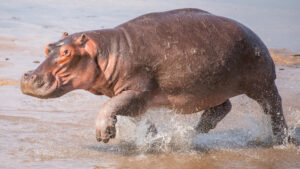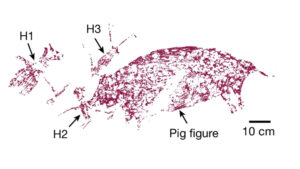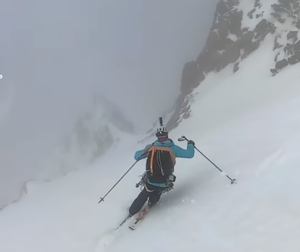For those who feel the romantic allure of living alone in the mountains, The High Life could be a manifesto.
Patagonia’s latest film documents the final season of the 119-year-old Le Refuge de la Charpoua, a “timeworn little building” nestled in the Alps near Chamonix. Surrounded by stunning views of towering granite walls, it’s hard to imagine a more scenic place to spend a summer.
Of course, Sarah Cartier — the French woman who has lived in the hut every summer for eight years — isn’t quite alone. In 2022, the hutkeeper came here with her two young children, caring for them while tending to the needs of climbers passing through.
“I don’t want to go,” Cartier says early on. “I need to go.”

In her eighth summer at the refuge, Sarah Cartier brought along her two young children.
‘The hut is my third child’
From the first minute of this short documentary, Patagonia’s film team makes it fully clear why anyone might feel that way. Sweeping drone shots of the wooden building, ensconced by granite spires and snow-covered mountains, reveal a setting worthy of Cartier’s poetic descriptions.
At an altitude of over 3,000m, it’s the smallest and oldest hut in the Chamonix Valley.
“For me, the hut is my third child, and I wasn’t ready to leave it behind,” she says. “There were more adventures to have here.”
Of course, Cartier also has two very real children. Bringing them to a place like this resulted in some criticism of her choices as a mother, she said. But for Cartier and her husband Noe, who comes to visit several times throughout the summer, it’s about recognizing children’s potential to adapt — and the tendency of adults to underestimate them.
“They have no limits,” Noe says. “We just have to be careful they don’t hurt themselves.”

One of Cartier’s children climbs on rocks around the refuge.
Mystical, despite the rotting wood
The documentary is titled “The Final Season of Chamonix’s Oldest Refuge” — but it’s not really true. Yes, the wood of the original building of Le Refuge de la Charpoua has begun to rot, but it will be rebuilt this year — and only slightly bigger than before.
It’s not even the final season for Cartier, who also plans to come back.
“The hut will stay authentic, I think,” she said. “Maybe we’ll write 100 years of new history. There’s the place. The planks of wood. But there’s also the towering walls of granite here. The place, the light. There’s a magnetism about it here. It’s mystical.”
At some point during the summer the film documents, Antoine, an alpinist and family friend, shows up with Noe to give Cartier a break from the kids and a chance to climb.
Few of Chamonix’s backcountry huts feel as remote and special as this one, he said.
“It’s somewhere that makes me feel good as an alpinist, that there are still places like this in 2022,” he said. “Even in Chamonix, the world capital of alpinism.”

A climber summits a peak near Le Refuge de la Charpoua.
As the documentary ends with a party celebrating the wooden hut’s last days, Cartier admits that she doesn’t want to go home. For anyone who has dreaded the end of an especially beautiful climbing trip, her sentiments will feel very familiar.
“I’m not nostalgic, but it’s the first time in eight years that I don’t want to go back down,” she said. “I don’t know if it’s because of the end of the old hut, or if it’s because we’re just so happy living here…I don’t want to go back to the world below.”






